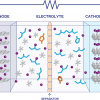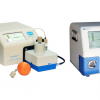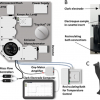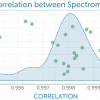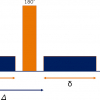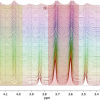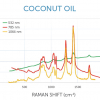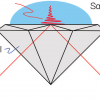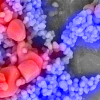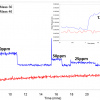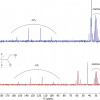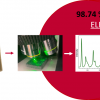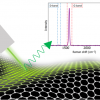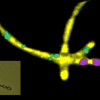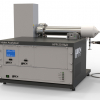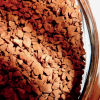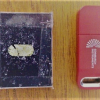Spectroscopy Applications
Benchtop NMR has many potential lithium-ion battery QA/QC applications, as the well-resolved spectra of the small organic molecules and ions are ideally suited for quick, convenient analysis.
Non-invasive insight of gilded paint samples using infrared microscopy accessory.
The landscape of controlled substance analysis is changing with compact mass spectrometers.
Candidate materials for optical in vivo oxygen sensing were evaluated in a relevant in vitro environment through careful control and monitoring of the solution temperature and dissolved oxygen concentration.
A method to correct for slight variations in the wavenumber and intensity response of multiple units is described, achieving better than 99.5 % agreement.
One important example of the utility of benchtop NMR instruments is the ability to measure self-diffusion coefficients, which can be used to extract physical information about a sample.
A flow setup will be used to monitor the formation of ethyl ethanoate over time and at different temperatures. Using this data, the activation parameters will be calculated using an Eyring–Polanyi plot.
Pro-Lite describe a new class of spectrometers developed by Wasatch Photonics.
This note outlines the basics of the ATR method, providing the analyst with the information they require to gain the most out of the technique.
A RISE system incorporates the advantages of both Raman imaging and SEM in the same vacuum chamber to facilitate the most in-depth characterisation of a sample.
This application note describes the measurement of NO2 using the m/z 46 peak and the NO/NO2 ratio in a research application.
Benchtop NMR has many advantages over similar analytical techniques due to its high degree of chemical specificity, especially when combining information from multiple chemical nuclei. Here, it is used to identify good or bad feedstock from a single, quick measurement.
Raman microscopy is an ideal technique for the analysis of gemstones and other geological samples thanks to its sensitivity to crystalline structures and the presence of minor components within a sample.
In this application note, an Edinburgh Instruments RM5 Raman Microscope is used to highlight how Raman microscopy an essential tool for any material scientist researching graphene.
Plastic waste is a growing issue and identification of plastic types for separation is key to effective recycling; Raman spectroscopy offers the speed and specificity to help.
This application note describes how Raman microscopy, alone or in combination, can investigate plant cell walls, macrophages and bacteria, and recognise atherosclerosis, differentiate malignant cells and monitor lipid uptake among other capabilities.
Detection of low levels of NH3 in H2O rich gas streams is important in a number of application areas such as Refrigeration, Chemical Industry, Automotive and Energy Production. When analysing NH3 in H2O gas streams the major problem with detection of low levels of NH3 occurs because of the spectral overlap between the m/z 17 of both water and NH3.
The term “grating” or “diffraction grating” often brings to mind a surface relief grating, with ruled lines and a delicate surface. Working in transmission, however, can open up many new options for the optical designer. In this tech note, we consider one special type: volume phase holographic (VPH) gratings. With benefits ranging from superior optical performance and design flexibility to robustness and consistency, VPH gratings are ideal for applications like laser pulse compression, spectroscopy, optical coherence tomography and astronomy.
Advanced analytical methods, such as FT-IR imaging, are required to accurately analyse the composition of powdered beverages.
This note describes the use of a transient absorption spectrometer to measure benzil powder.

